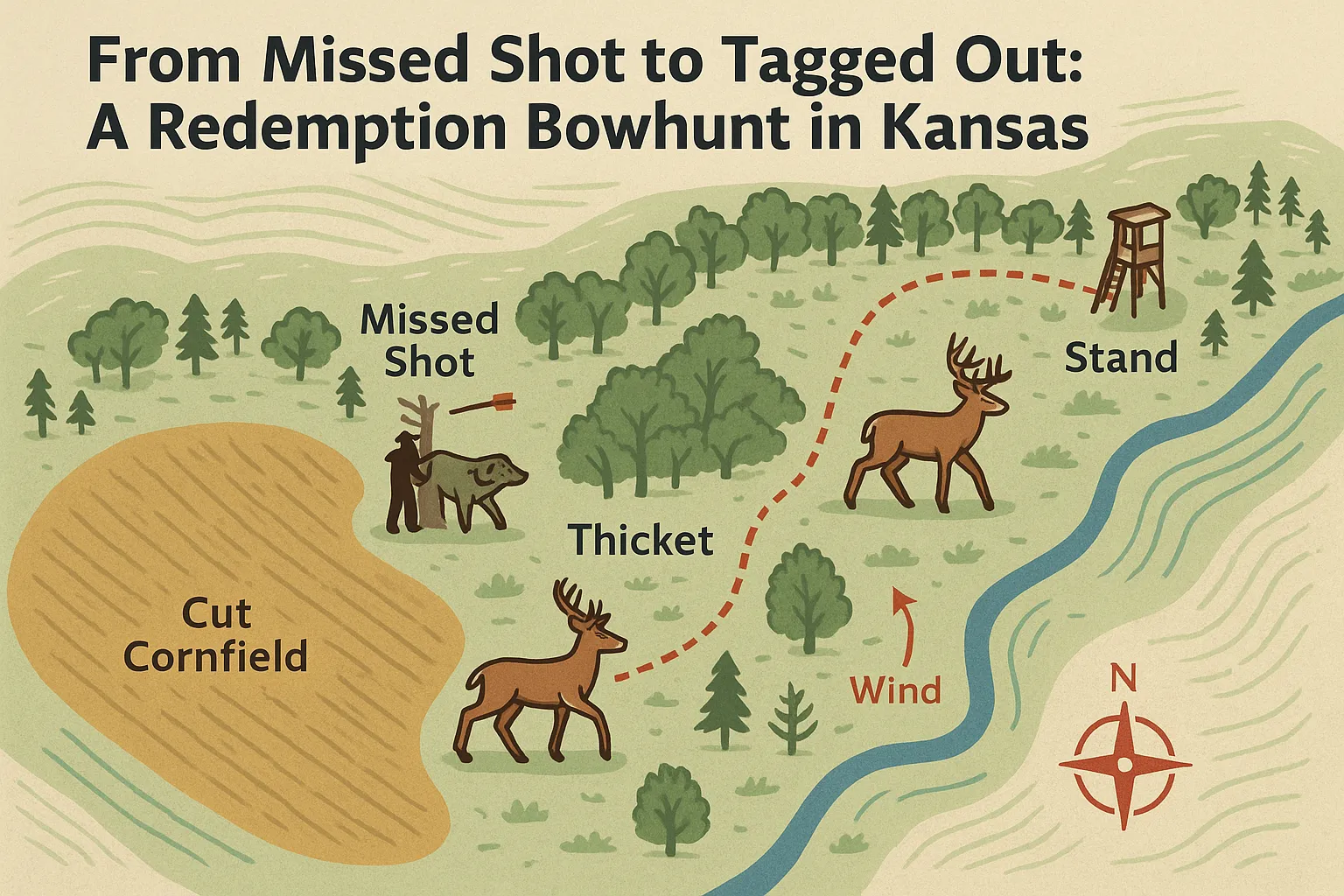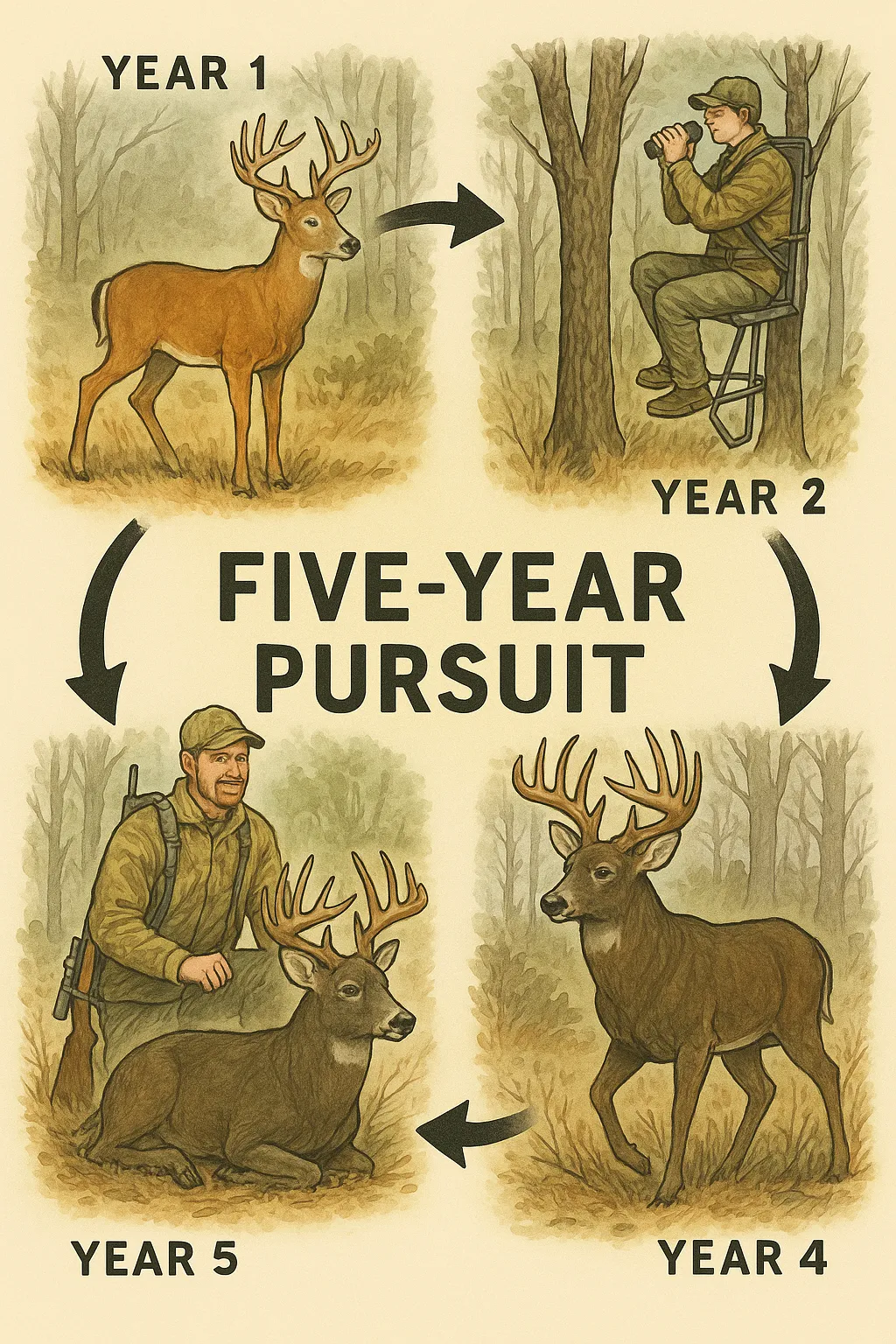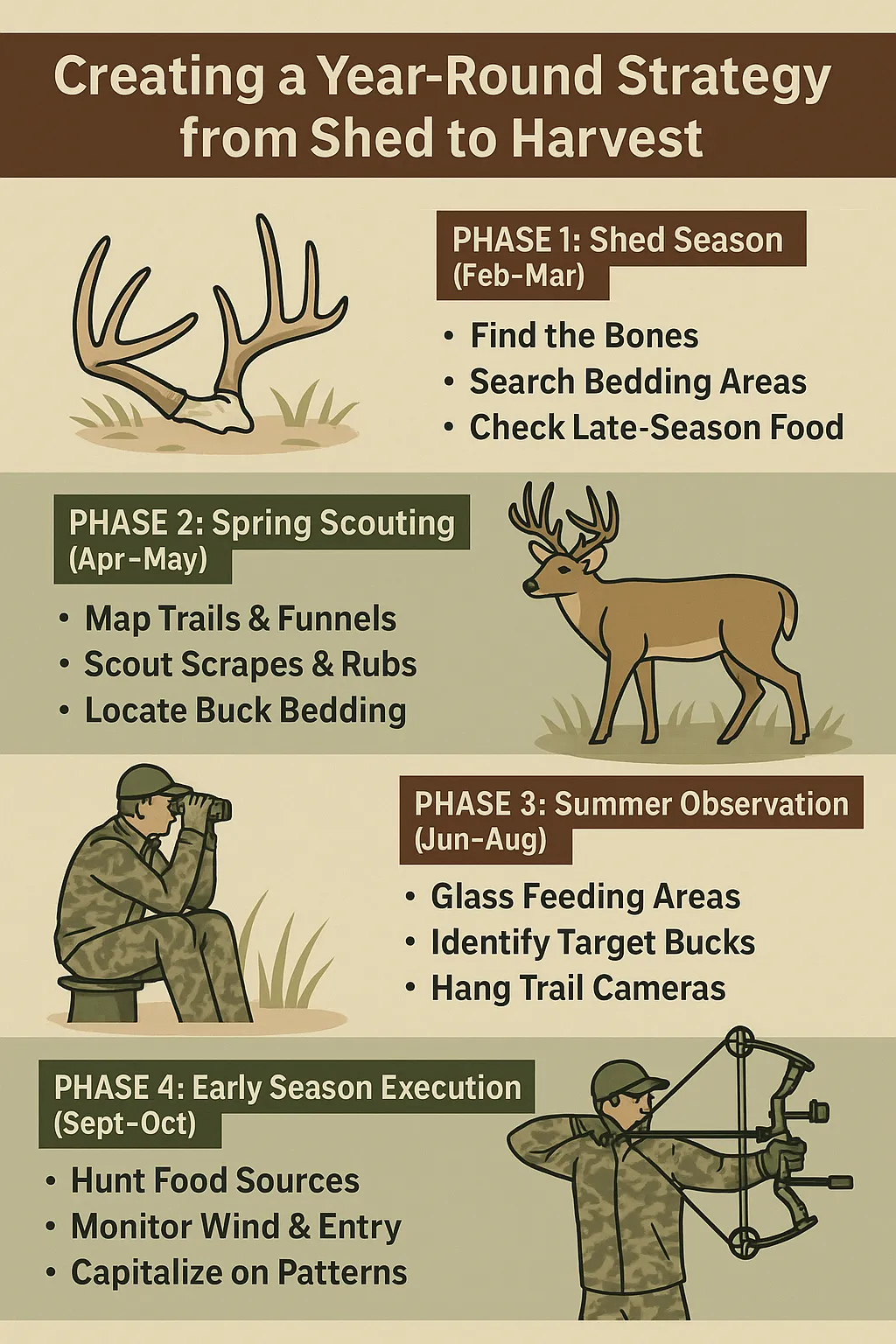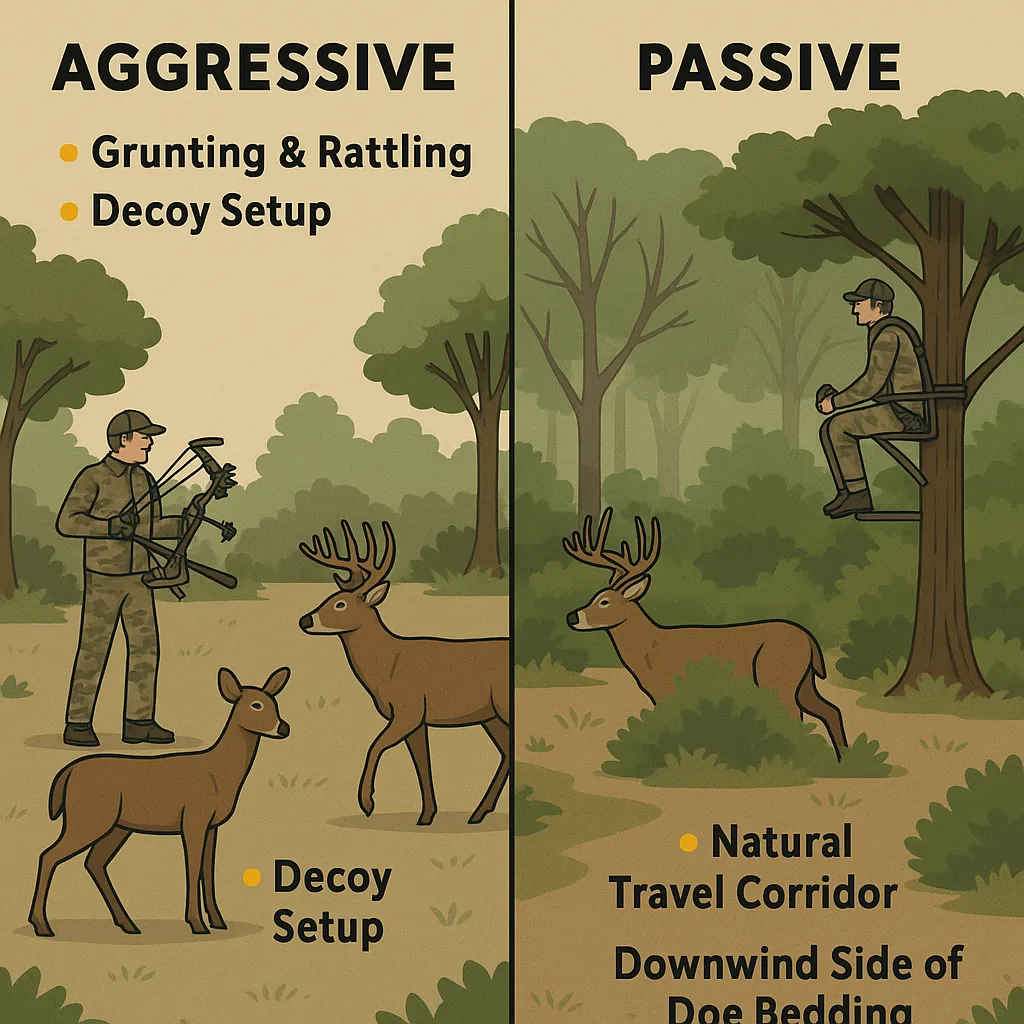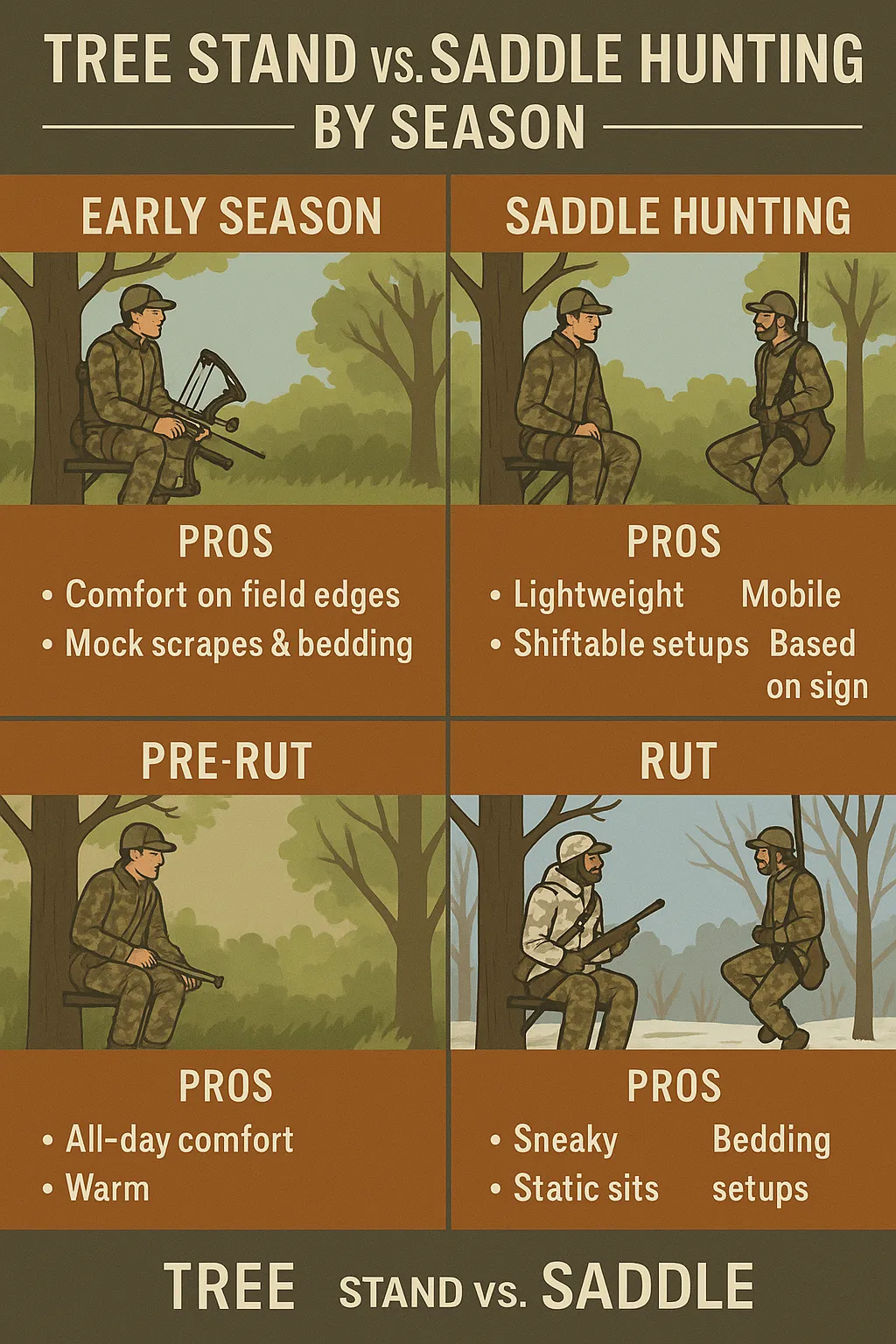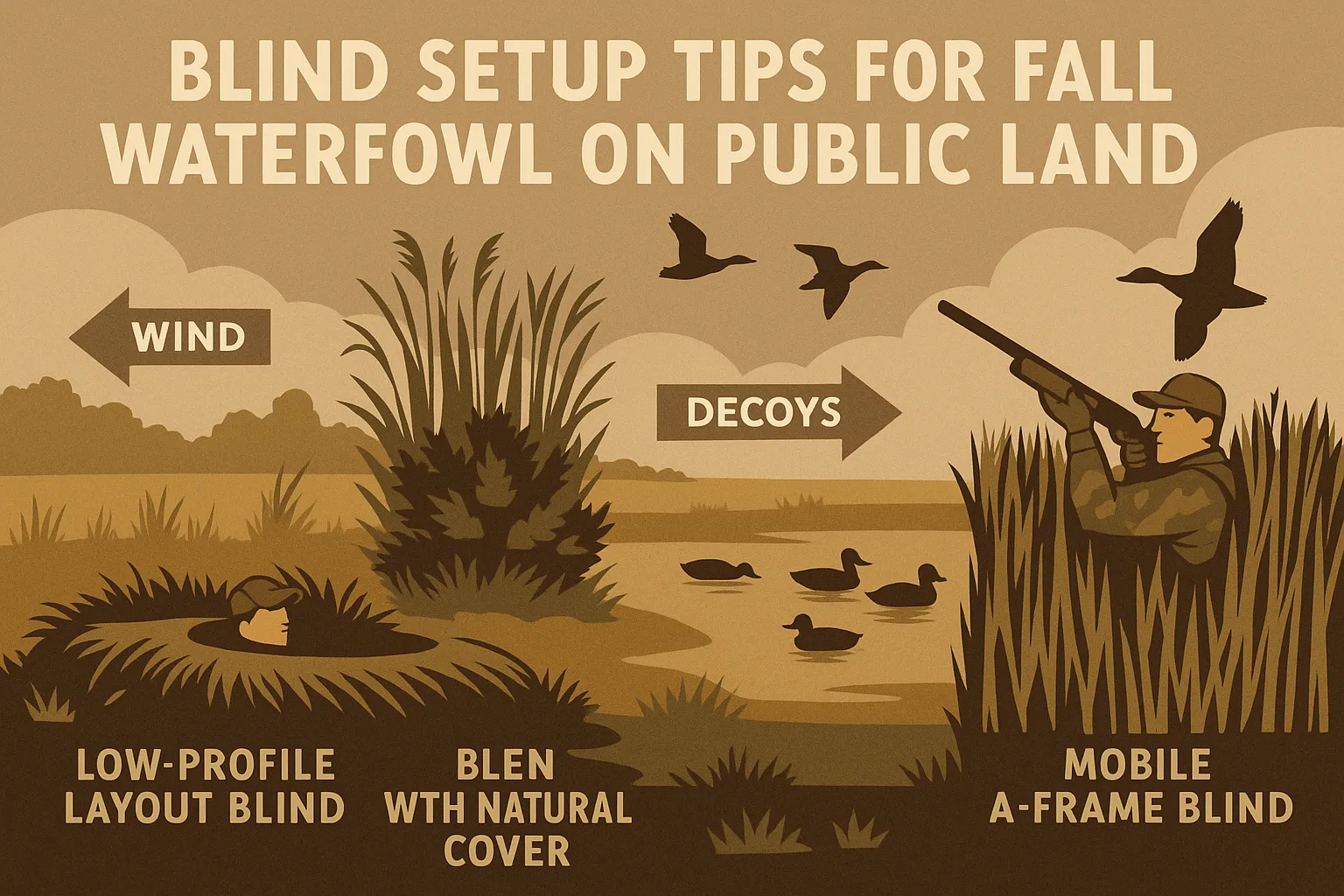
Blind Setup Tips for Fall Waterfowl on Public Land
Hunting waterfowl on public land is a high-stakes chess match—especially in the fall. Birds are flighty, the pressure is high, and if your blind isn’t just right, you might as well not even uncase your shotgun. On pressured birds, your hide matters more than your call, decoys, or even your shooting.
This post breaks down the key blind setup strategies for success in the fall, tailored for public access areas across the Mississippi, Central, and Atlantic Flyways.
🌾 1. Blend in or Be Gone: Natural Cover Wins
🧠 Key Principle: Your blind must match the dominant vegetation and avoid casting shadows.
📍 Top Natural Cover Types:
-
River cane, cattails, or willow thickets
-
Cornstalk stubble or cut milo rows
-
Smartweed or natural moist soil vegetation
🎯 Best Practices:
-
Cut cover from the exact area you’re hunting—not pre-bundled grass
-
Break up the outline of your blind with angled material and overhead scatter
-
Face away from rising sun if possible to minimize shadows
🎙️ “I’ll carry three bundles of local grass in my kayak before I use a pre-made blind. Birds see that stuff from 300 yards.”
— Derek M., Missouri
💨 2. Wind Dictates Everything—Especially Blind Location
🧭 Why Wind Is Non-Negotiable:
-
Ducks land into the wind, flaring off movement or sun
-
Ideal wind = crosswind or quartering, NOT directly in your face or back
-
Geese are even more sensitive to wind + glare angles
📍 Blind Setup by Wind Type:
| Wind Direction | Blind Location | Benefits |
|---|---|---|
| Crosswind | Lateral to landing zone | Side shots, more decoy realism |
| Quartering Toward You | 45° offset from main landing pocket | Controlled shot windows, better hide angle |
| Straight In Face | Back off and let birds finish wide | Avoids birds flaring over shiny faces |
| Straight Behind You | Worst case—adjust decoys or don’t shoot front |
🎙️ “I’d rather shoot ducks off the side than have them land in my lap and blow out at 60 yards.”
— Cole T., Arkansas Delta
🦆 3. Go Low and Invisible—Not Big and Boxy
🧠 On Pressured Birds:
-
Birds flare at symmetrical shapes, shadows, and movement
-
A blind 4 feet tall on a bare shoreline is a beacon, not a hide
📍 Pro Tips for Staying Invisible:
-
Use layout blinds in dry fields or low-profile sleds in moist soil
-
In marshes, build chair blinds below the grass line
-
Eliminate movement—camo face masks, gloves, and no glass reflections
🎯 Key Add-ons:
-
Raffia grass dyed to match the terrain
-
Stubble straps with native reeds or corn husks
-
Shadow netting over the front
🎙️ “Public birds flare on shiny blind faces. I use shadow netting and shoot from the shadows—it’s a game changer.”
— Kelsey R., Louisiana
🪶 4. Scout for the Hide Before the Birds
🧠 Order of Operations:
-
Find feed or roost location
-
Identify where you can hide first
-
Build your hunt around the best concealment zone
-
Only then deploy decoys and calls
📍 Common Mistake: People hunt where birds feed—not where they can hide effectively.
🎙️ “I found 300 mallards in a milo field—but I had zero cover to work with. I backed up 100 yards into a ditch, and still pulled 8 into range.”
— Jason E., Illinois Flyway
🎯 5. Mobile and Modular Wins
🧠 Flexibility = Opportunity on Public Land
-
Wind shifts
-
Birds land short or wide
-
Competing hunters force repositioning
📍 Modular Blind Solutions:
| Blind Type | Best Use | Pros |
|---|---|---|
| Layout Blind | Dry fields, pastures, levee tops | Fast, flat, easy to conceal |
| Panel Blind | Fence lines, stubble edges | Wind break, good for multiple shooters |
| A-Frame or Ghost Blind | Cattail marshes or brushy cover zones | Blends well with vertical vegetation |
| Chair + Natural Cover | Timber holes, creek banks | Ultra-light and field-adaptable |
🎙️ “My panel blind packs down in 90 seconds. If the birds shift 80 yards, so do I.”
— Leo V., Kansas
🧰 Essential Blind Gear for Fall Waterfowl
| Item | Why It Matters |
|---|---|
| Wind checker (powder or smoke) | Ensures correct blind orientation |
| Shadow mesh or netting | Breaks up shooter visibility and movement |
| Heavy-duty zip ties or grass clips | For adding fresh cover in the field |
| Waterproof seat or mud stool | Comfort for long sits in marsh or stubble |
| Collapsible brush cutter | Quickly gather natural blind cover onsite |
📣 Blind Prep Checklist (Night Before)
-
✅ Check wind forecast (hour-by-hour)
-
✅ Pack native brush (if not available at site)
-
✅ Bring extra stakes and tie-downs for sudden wind
-
✅ Charge headlamp + LED cap light
-
✅ Scout your shadow (where sun will rise and cast blind outline)
💡 Pro Tip: If your blind is good enough that you could take a nap and not be seen—you’re probably good to go.
🌟 Final Shot: Build It Right or Watch Them Flare
In fall waterfowl hunting, especially on public ground, your first impression is your last chance. Concealment beats calling. Wind beats spread. And the best shot opportunities go to the hunters who hunt invisible.
“The best blind is the one they never see—and the one you never have to fix during the hunt.”
Leave A Comment
Related Posts
Aggressive vs. Passive Tactics in the Rut: Which Wins? When […]
Tree Stand vs. Saddle Hunting by Season: Pros & Cons […]
Trail Cam Strategy by Season: When & Where to Set […]

